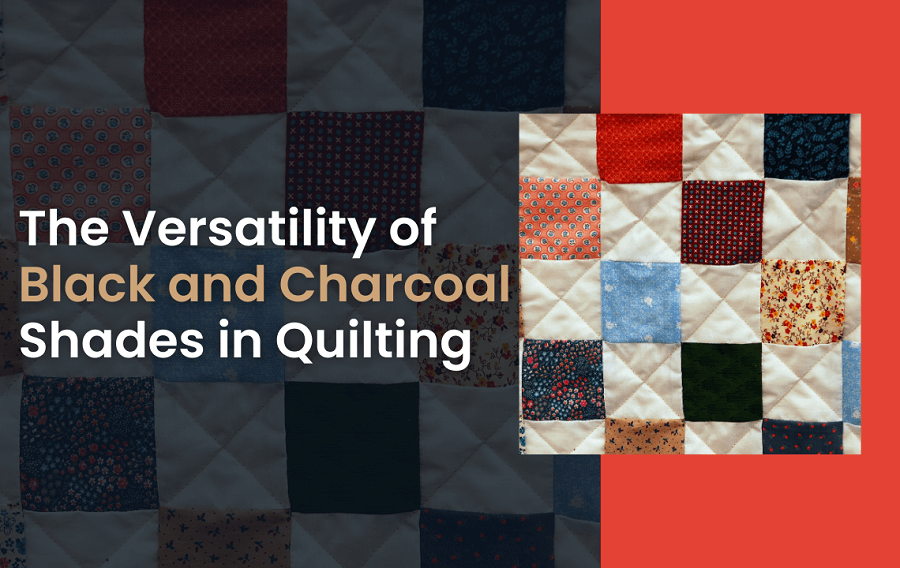The Versatility of Black and Charcoal Shades in Quilting

Quilting is a sewing technique that involves stitching layers of fabric together to create a quilt or blanket. This traditional craft has been practiced for centuries and has undergone various advancements over time, including the use of new techniques and materials.
Quilting patterns have a rich history dating back centuries. In ancient Egypt, for example, quilts were made of linen and decorated with intricate patterns. In medieval Europe, quilts were used as a form of armor, with layers of fabric providing protection for soldiers. The practice of quilting continued to evolve over time, with new patterns and techniques emerging.
The “log cabin” design is a timeless quilting pattern that has been popular for centuries since its emergence in the 1800s. It involves arranging strips of fabric in a square or rectangular shape, with alternating light and dark fabrics to create the illusion of a log cabin. Incorporating black and charcoal shades in this pattern can enhance its visual impact by adding depth and contrast.
Charcoal color, a deep shade of gray, has also played a significant role in the history of textiles. In the 1800s, natural dyes were used to create shades of gray, including charcoal. Charcoal was a popular color for men’s suits and coats, as it was considered a neutral and sophisticated option.
In the world of quilting, the use of charcoal fabric can create a modern and sophisticated look, particularly when paired with brighter or more vibrant colors. Charcoal fabric can also be used as a neutral background, allowing other colors and patterns to stand out.
Overall, the history of quilting patterns and the use of charcoal color in textiles reflect the evolution of artistic expression and the cultural and social contexts of their time. Today, these traditions continue to inspire and influence modern quilting practices.
Among the various materials used in quilting, fabrics with black and charcoal shades are highly popular.
In this essay, we will delve into the reasons why these colors are commonly used in quilting.
Firstly, black and charcoal colors are neutral colors that can complement any other color. When used in quilting, they can help to create contrast and make the other colors in the quilt pop. For example, if a quilt is made with bright and vibrant colors, adding black or charcoal fabric can help to balance the overall design and prevent it from being too overwhelming. Additionally, using black or charcoal fabric as a background can help to highlight the other colors in the quilt and make them stand out.
Secondly, black and charcoal shades can create depth and dimension in a quilt. By using different shades of black and charcoal, quilters can create shadows and highlights that add texture to the quilt. This can be especially effective when creating a landscape or nature-themed quilt, as it can help to create the illusion of depth and make the quilting patterns look more realistic.
Thirdly, black and charcoal shades are versatile and can be used in a variety of quilting styles. They can be used in traditional quilts, modern quilts, art quilts, and more. They can be used in bold and graphic designs or subtle and understated designs. This versatility makes them a valuable addition to any quilter’s fabric collection.
Fourthly, black and charcoal shades can be used to create a dramatic or sophisticated look in a quilt. When used in combination with metallic fabrics or other luxurious materials, they can create a quilt that looks elegant and high-end. This can be a great option for special occasion quilts or quilts that will be displayed as art.
In conclusion, black and charcoal shades are commonly used in quilting for several reasons. They are versatile, neutral, and can complement any other color. They can create depth and dimension in a quilt and can be used to create a dramatic or sophisticated look. If you are a quilter, consider adding some black and charcoal fabric to your collection and experiment with incorporating them into your quilts. You may be surprised at how they can enhance the overall design and bring your quilt to life.
Happy Quilting!!





